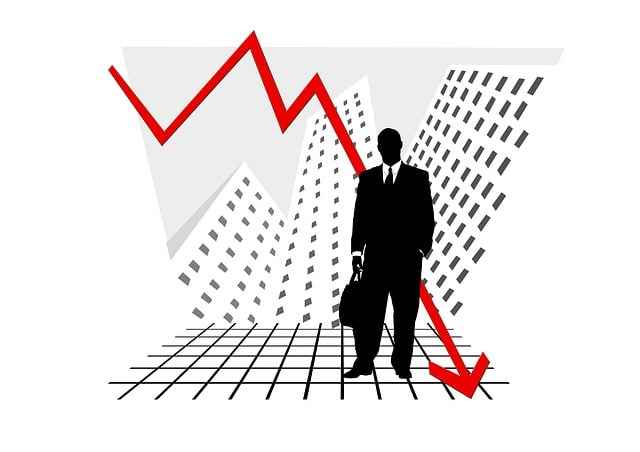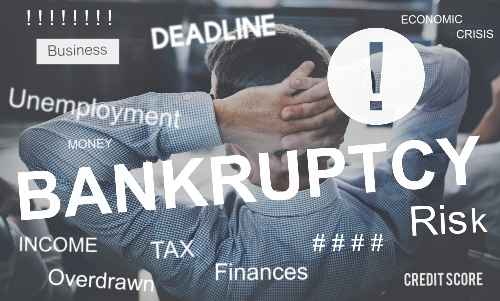In the modern business landscape, a financial crisis can befall businesses that were once incredibly prosperous.
Navigating a financial crisis in a company is a job no leader wants, but unfortunately, it may be one you have to take on.
Understanding the process of corporate insolvency can give you a head start if your business faces trouble. That’s why we’ll be taking a look at key indicators of impending business insolvency and strategies for avoiding business bankruptcy in this guide.
Table of Contents
What Is Business Insolvency?

Insolvency is what happens when a business’s financial obligations exceed its assets. In short, if debts are due but your business doesn’t have the money to pay them then it’s considered insolvent.
Periods of insolvency cause significant stress for management, stakeholders and employees. But, insolvency isn’t always the end of the road.
There are many ways that a company’s leaders can overcome these financial difficulties and make declaring bankruptcy the last resort.
The Consequences of Insolvency for Leaders, Employees and Stakeholders
An insolvent business has far-reaching ramifications. Everyone from leaders, employees and stakeholders in a business will feel the effects.
Here are some of the consequences of insolvency and how it can affect key individuals:
For Leaders
It’s up to leaders to understand the process of corporate insolvency and decide what to do next.
This places significant pressure on leaders to avoid business bankruptcy and turn the tide of financial difficulty, all while managing stakeholders’ expectations.
However, if this goes wrong, leaders can suffer reputational damage, making it much harder to secure future employment.
On top of this, leaders may come under legal scrutiny if they are found to have mismanaged the company.
For Employees
While the main burden of navigating a financial crisis in companies will fall on upper management, lower-level employees still feel the strain.
Job insecurity makes day-to-day duties much more stressful, and drops in productivity can have a knock-on effect.
Insolvency may also mean employees’ wages are paid late or put on hold, creating financial instability and compounding their stress.
Many employees may choose to leave an insolvent company regardless of whether the situation can be managed.
For Stakeholders
Shareholders, suppliers and customers face a unique set of challenges during insolvency.
Though managing debts and creditors is not their responsibility, insolvency has ripple effects that can affect their financial stability. Shareholders will see the value of their investment decline, impacting their financial planning.
Suppliers may have to forgo payments and pursue their own claims. Customers will likely face disruptions or lack of product availability, and their reactions to this will determine the company’s reputation moving forward.
How to Tell if Your Business Is Becoming Insolvent
Recognising the key indicators of impending business insolvency is crucial. If you know your business is becoming insolvent, you can take timely action to fend off troubles and return to prosperity.
Some key indicators of impending business insolvency are:
- Long-Term Continuous Losses – If your company is recording losses month after month, it’s a clear indicator to creditors that you may not be able to make good on debts. Continuous losses can also lead to further loans and mounting debt, and they signal a drop in customer numbers and a declining cash flow.
- Lack of Liquidity – Companies that struggle to convert assets into cash will face financial problems. However, this becomes a key indicator of impending business insolvency when your company can no longer cover simple operating costs such as paying suppliers.
- High Employee Turnover – As we’ve seen, some employees may jump ship as soon as they get wind that your business is struggling. This is true of upper management too, and this can be a clear indicator to creditors that something is very wrong.
- No Future Financing – Securing investment is a vital part of long-term business growth and success. However, when insolvency is looming, investors won’t take the risk of backing your company.
- Mounting Pressure from Creditors – The final and most clear indicator of impending insolvency is pressure from creditors. As demands and threats of legal action to make good on your loans become more frequent, insolvency becomes unavoidable.

Seeing Insolvency Through
Insolvency is a dire situation, but it doesn’t have to mean a certain death for your company. Understanding the process of corporate insolvency will help you make an in-depth plan to take your business back to prosperity.
Once you have identified the key indicators of impending business insolvency, it’s time to decide whether you want to seek third-party assistance. Bear in mind that professional help probably won’t be cheap, but any funds you have to spend at this stage will likely be a sound investment.
You will need to choose a voluntary insolvency procedure to avoid declaring bankruptcy. This will be key to managing debts and creditors during insolvency.
Strategies for avoiding business bankruptcy include:
- Administration: An administrator is appointed to manage the business’s affairs and assets and find ways to stop insolvency.
- Receivership: A receiver takes charge of specific assets within a company on behalf of creditors.
- Company Voluntary Arrangement (CVA): A specialised CVA is drawn up between the insolvent company and its creditors to repay debts over a specific period.
- Partial Corporate Liquidation: Partial corporate liquidation involves selling certain assets held by a company and using the funds to pay back creditors.
Keep in mind the legal aspects of corporate liquidation. A liquidator must be appointed and creditors/employees must be informed so that they can file claims for outstanding debts/wages.
Accurate asset valuations, fair and transparent sales, continuous reporting on behalf of the liquidator and compliance on behalf of the insolvent company are essential.
Depending on the success of the above strategies for avoiding business bankruptcy, the dissolution of your company may not be necessary.
However, if an insolvency procedure is court-ordered, or debts are too large for insolvency procedures to recover, total liquidation and dissolution may be necessary.
Conclusion
Navigating financial crisis in companies places a great deal of stress on everyone from leaders to employees, to stakeholders. Consistent communication so all parties have an understanding of the process of corporate insolvency can be a great help in managing expectations.
Recognising the key indicators of impending business insolvency will give you ample time to turn things around. Managing debts and creditors during insolvency is vital to avoid legal ramifications, and ensure insolvency procedures are voluntary and dissolution is not necessary.
Selecting the best strategy for avoiding business bankruptcy might require external help. However, despite your best efforts, creditors may still take legal action. A sound grasp of the legal aspects of corporate liquidation will help ensure employees and stakeholders come out unharmed.
Confronting insolvency poses a substantial hurdle for your business, yet it’s a challenge that can be overcome. Remaining well-informed about the process, vigilantly monitoring critical signs, and seeking expert counsel as needed will empower you to make well-informed choices and pave the way for a return to prosperity.

